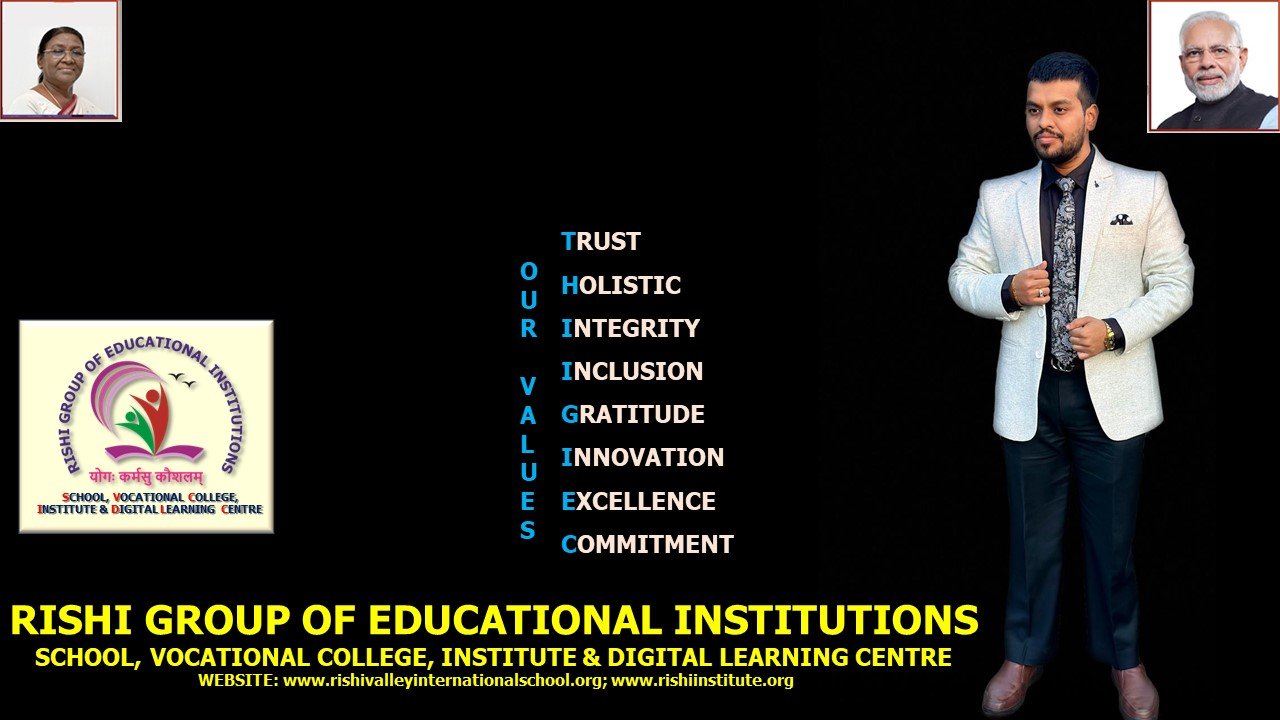Entrepreneurs
Bootstrap Your Business On A Budget: 10 Low-Cost Business Ideas
Published
2 years agoon

Starting a small business is a thrilling idea for people of all ages and walks of life. In fact, according to a Guidant Financial report, 27% of small business owners were between the ages of 30-39, followed by 26% of those between the ages of 40-49. This report suggests that while an increasing number of younger business owners are joining the market, a sizable majority of small business owners are in their thirties and forties. What I want to say here is that whether you are in your 20s, 30s or even 50s, starting your own business is always a good idea.
Anyone can decide to start a new business based on a variety of motives, such as the chance to follow a passion, financial independence, or just more control over their working hours. The initial cash needed to launch a small firm, which is frequently a sizeable sum, is one of the major obstacles, though.
Thankfully, there are several ways to launch a small business with less capital requirement, opening up entrepreneurship to a larger spectrum of people. The 10 quick business ideas in this post are only a sample of the numerous opportunities that are available for all.
- Freelance services
Offering freelance services like writing, graphic design, or social media management is among the simplest methods to start a small business. These skills are easily marketable online via websites like Upwork, Fiverr, and Freelancer.
- Tutoring
You can provide tutoring services in person or online depending on your specialization. This might be giving music lessons, academic tutoring, or language instruction.
Also Read: 5 Proven Tips For Young Entrepreneurial Success
- Cleaning services
Starting a cleaning business needs little capital and may be advertised to both consumers as well as businesses. You may concentrate on particular specialties, like cleaning for Airbnb or cleaning offices.
- Pet services
Starting a pet service company could be the best choice for you if you love animals. Dog walking, pet sitting, and even grooming services may fall under this category.
- Event planning
Starting an event planning agency might be an excellent choice if you have a keen eye for detail and enjoy organizing events. This may cover everything from weddings to business conferences.
- Personal shopping
Starting a personal shopping service could prove to be a successful business venture if you enjoy fashion and have a keen sense of style. This could entail wardrobe organizing, shopping for clients, or even personal styling.
Also Read: The Perfect Helping Hand: How Virtual Assistants Benefit Solopreneurs
- Food delivery
Starting a food delivery service costs relatively little money and can be advertised to both residential and business customers. You might concentrate on particular areas like event catering or the delivery of nutritious meals.
- Online store
Establishing a small business online using platforms like Etsy, Shopify, or Amazon takes little capital. Everything from homemade items to drop-shipped products might fall under this category.
- Affiliate marketing
You can make money with affiliate marketing if you have a blog or a social media following. This entails marketing goods and receiving payment for any purchases made using your special affiliate link.
- Virtual assistant
Starting a virtual assistant business might be an excellent choice if you have administrative skills. This entails offering clients remote administrative help for duties including email management, scheduling, and accountancy.
There is no doubt that starting a small business with less money is possible. You can start building your ideal company right now by taking these 10 short ideas into account and exploring online and work-from-home opportunities. Just keep in mind to be motivated, focused, and open to new prospects.
Sahil Sachdeva is an International award-winning serial entrepreneur and founder of Level Up PR. With an unmatched reputation in the PR industry, Sahil builds elite personal brands by securing placements in top-tier press, podcasts, and TV to increase brand exposure, revenue growth, and talent retention. His charismatic and results-driven approach has made him a go-to expert for businesses looking to take their branding to the next level.

You may like
-


‘SNL’ boss Lorne Michaels reveals the show’s satire plans for the upcoming election
-


Business and Beyond: Mumbai’s Ultimate Event for Aspiring Entrepreneurs and Business Leaders
-


The Future of Entrepreneurship: Insights from Royan Nidea’s Vision
-


Mastering the Art of Amazon FBA: Building a Sustainable Business
Entrepreneurs
Ambarish Nag Unveils His Most Personal Track Yet: ‘Every Step of the Way’—A Journey of Love and Vulnerability
Published
2 months agoon
September 4, 2024
Mumbai-based musician Ambarish Nag has once again captivated audiences with his latest single, ‘Every Step of the Way,’ which was released on August 30th, 2024, across online platforms. This new track is not just another addition to his discography; it is a deeply personal exploration of vulnerability and the universal longing for connection.
Ambarish’s journey through music has always been about bridging gaps—both cultural and emotional. With his debut album last year, he skillfully blended Eastern and Western influences, crafting a sound that resonates across borders. This unique fusion has not only defined his style but also cemented his reputation as a visionary artist in the music industry.
However, the road to artistic fulfilment is often complex. Since launching his debut single in July 2019, Ambarish has steadily built his name, with each new release in 2020, 2021, and 2022 bringing him closer to his aspirations. His first full album in 2023 marked the culmination of years of relentless effort and creative growth, earning widespread acclaim for his ability to forge deep connections with listeners.
The creation of ‘Every Step of the Way’ came with its challenges. After writing the lyrics and beginning the recording process last September, Ambarish took a six-month hiatus—a necessary period of introspection that allowed him to delve deeper into the emotions fueling his most intimate work to date.
At the heart of ‘Every Step of the Way’ lies a powerful message: the courage to embrace love and conquer the fears that often accompany intimacy. Ambarish’s exploration of the complexities of human relationships offers a narrative that resonates with many, reflecting his growth as an artist and as a person willing to share his vulnerabilities with the world.
Ambarish’s journey is one of resilience and perseverance, guided by his belief in the power of persistence—a belief encapsulated in his favourite Steve Harvey quote: “If you quit, there’s no doubt it will never happen.” Through his music and his story, he aims to inspire others to push through their challenges.
With the release of ‘Every Step of the Way,’ Ambarish remains focused on the future, eager to continue his creative journey and embrace new opportunities. Each step he takes is a testament to his commitment to bridging cultures and creating enduring connections through his music.
Ultimately, ‘Every Step of the Way’ is more than just a song; it is a reflection of Ambarish Nag’s ongoing journey as an artist and a human being. As he continues to break down barriers between Eastern and Western musical styles, Ambarish is driven by a relentless passion for his craft, always striving to be the hardest-working person in any room. This latest single is yet another chapter in his inspiring story of dedication and artistic vision.
Entrepreneurs
Designing a Life You Love: A Journey of Transformation with Dr. Anu B
Published
2 months agoon
September 3, 2024
You feel stuck. You feel trapped. You’re working a dead-end job. You have zero motivation and you don’t see how you can make a change and get out of that slump. I’m sure some of you may have found yourselves in a similar situation at some point. Instead of getting overwhelmed, Dr. Anu B. encourages you to dare to reimagine a life that truly excites and fulfills you. “Imagine approaching life with the mindset of a designer. Begin to ask bold questions like, What if I could design a life that truly excites me? or How would my world change if I could create something entirely new and fulfilling?”. “By embracing this approach, you open the door to a life of possibilities that you might have never imagined “she explains.
Dr. Anu’s illustrious career spans over two decades, highlighted by exceptional achievements in both education and industry. With a Doctorate in Engineering, she has built a reputation for profound technical expertise and visionary leadership, earning accolades such as the Business Excellence HR Future Leader Award and the Guru Shiromani Award for 2022-23.
Yet, amidst her professional success, Dr. Anu confronted a startling realization: despite her accomplishments, there was a profound disconnect between her external achievements and her inner sense of fulfillment. She discovered that many high-achievers, herself included, grapple with feelings of anxiety and discontent, drifting through lives they hadn’t consciously designed.
This revelation ignited a transformative journey for Dr. Anu. Driven by the need for a deeper purpose, she sought out the “Designing Your Life” (DYL) program at Stanford University, created by Bill Burnett and Dave Evans. The program’s core idea—that we can intentionally craft our lives like any other project—resonated deeply with her, sparking a profound personal transformation.
Embracing this new perspective, Dr. Anu transitioned her focus to life coaching. As a certified Designing Your Life Coach, she now dedicates herself to guiding high-performing individuals, including senior executives and leaders, in designing lives that truly align with their deepest values and aspirations. Her journey from a successful career to a passionate advocate for intentional living serves as a powerful testament to the possibility of crafting a life filled with genuine joy and purpose. Her coaching practice has empowered countless people worldwide to break free from anxiety and design lives that thrive with purpose and joy.
Redefining Success Through Life Design
Dr. Anu’s philosophy centers around the idea that success is not just about achievements but about ‘ Becoming’ the person you were meant to be. She always encourages people to view their lives as their most significant project—one they have the power to shape intentionally.
At a recent panel discussion on ‘The Entrepreneurial Mindset,’ alongside leaders like Rohit Gupta, COO & Co-Founder of College Vidya, and Renuka, Founder & CEO of Indo Nippon Enterprises Pvt. Ltd., Dr. Anu captivated the audience with her powerful insights on overcoming anxiety and creating a fulfilling life.
Her work has garnered significant recognition, being named among the Top International Life Coaches and frequently invited as a speaker to talk about mental health, work-life balance, career redesign, and the importance of designing a life written by you—not for you. She has shared her insights on various platforms, and international forums like I’m a Story covered by television media and the Indian Alert’s “50 Entrepreneurs of the Year” event.
Empowering Change: From Burnout to Happiness
Dr. Anu’s unique blend of technical acumen, human empathy, and coaching expertise sets her apart in the world of life coaching. She doesn’t just offer coping strategies; she provides actionable, life-changing techniques that have proven effective in her own life and in the lives of her clients.
Her coaching programs incorporate proven techniques like reframing, prototyping, and mind-mapping to help clients build their way forward, step-by-step, towards a life that is not just lived but is a masterpiece of their own making. She supports clients through career transitions, personal setbacks, and life redesigns, empowering them to take radical responsibility for their happiness and fulfillment.
In addition to her coaching practice, Dr. Anu co-founded BlissfulDrapes, an Indian ethnic fashion brand. However, this venture is more than just a business; it is a means to give back. The profits from BlissfulDrapes fund Designing Your Life programs for young girls, and single mothers in India, helping them achieve financial independence and personal fulfilment. Through this initiative, Dr. Anu demonstrates her commitment to empowering others not just in words, but through action.
A Vision for the Future: Creating 10,000 Opportunities
Looking ahead, Dr. Anu’s vision is to create 10,000 opportunities for people to design a life where they can thrive. Her journey from academia to international life coaching, her achievements like the Indian Legacy Award 2021, and her commitment to making a meaningful impact all serve as a testament to the power of life design.
Designing Your Destiny: Are You Ready?
Dr. Anu B is not just a life coach—she is a guide for those ready to take the reins of their own lives. She invites you to awaken to the incredible potential that lies in designing your own life. Are you ready to discover how powerful and exhilarating life can be when you start designing your destiny?
In the words of Dr. Anu, “Don’t just live—design a life you love.”
If you’re feeling stuck or seeking to realign your life with your deepest values and aspirations, Dr. Anu invites you to explore this journey with her.
Visit her website at http://www.anubinny.com/ or email her at dranubinny@gmail.com to schedule a clarity call.
Entrepreneurs
SHIKSHIT BHARAT SANKALP HUMARA VISION OF BANSHI VALLABH MISHRA
Published
3 months agoon
August 8, 2024
Banshi Vallabh Mishra, a dynamic and visionary second-generation entrepreneur based in Delhi, spearheads a transformative movement in the education sector. With over five years of experience across diverse fields such as real estate, education, export manufacturing, and information technology, Mishra’s journey is marked by his unwavering commitment to social upliftment and educational excellence.
Banshi Vallabh Mishra, Director of Operations; has been associated with the RISHI GROUP OF EDUCATIONAL INSTITUTIONS comprising a School, a Vocational College, an Institute, and a Digital Learning Centre since its inception.
The Rishi Group’s business model focuses on delivering an education that is not only comprehensive but also inclusive, catering to the diverse needs of students. The group’s commitment to inclusivity and holistic education sets it apart from its peers, ensuring that every child has the opportunity to grow and succeed.
His vision extends to the Rishi Group of Educational Institutions, committed to a career-oriented educational project with a holistic and inclusive approach. This includes integrating AI, robotics, skills training, vocational education, and digital learning into the curriculum.
In the education space, he has also co-founded the Education First an ed-tech venture aimed at leveraging technology to provide world-class education at the grassroots. MOOCs on Introduction to Family Engagement in Education by Harvard University. MOOCs on The Future of Work: Preparing For Disruption by World Bank Group.
Banshi Vallabh Mishra’s entrepreneurial journey began under the aegis of the Conscient Group, where he provided strategic direction to various entities. His passion for education led him to co-found Education First, an ed-tech venture to leverage technology to provide world-class education at the grassroots level. This initiative reflects his belief that “One child, one teacher, one book, one pen can change the world.”
Despite the challenges posed by the recession, His initiatives have grown tremendously, transitioning from offline to online platforms to continue delivering quality education. His resilience and adaptability have been crucial in navigating these turbulent times, ensuring that education remains accessible to all.
Banshi Vallabh Mishra’s life lesson, “Together may we give our children the roots to grow and the wings to fly,” encapsulates his dedication to empowering the next generation. By providing strategic direction and innovative solutions, he hopes to inspire others to contribute to the betterment of society through education.
Looking ahead, he aims to build an education system that meets the highest global standards while being deeply rooted in Indian culture and ethos. His vision is to create a vibrant, knowledgeable society by ensuring higher quality education for all, ultimately making India a “Global Knowledge Super Power.”
Through initiatives like SHIKSHIT BHARAT SANKALP HUMARA, he is not just dreaming of a better future but actively working towards it. His efforts in education are a testament to his belief that holistic and inclusive education is the key to a brighter tomorrow.
In conclusion, a thorough professional with rich, in-depth, and extensive experience in the educational arena, a distinguished gentleman with deep-rooted values and ethics, a culturally inclined individual, with an admirable sense of social responsibility and is progressive in thought- Banshi Vallabh Mishra carries the Rishi Group of Educational Institutions legacy.
Entrepreneurs
The Creative Orbit: A New Approach to Performance Marketing
Published
3 months agoon
August 5, 2024
Shanaya Fernandes, the visionary founder of The Creative Orbit, has always been driven by an entrepreneurial spirit. She is a former student of St. Xavier’s College, where she diligently completed her junior college education. She later embarked on a new academic journey, pursuing a double degree, including a BBA, while paying for her education through freelance work. This experience showed her determination from an early age.
After graduating, Shanaya joined Sony Music Entertainment, where she worked for two years. While supporting her family, she also dreamed of starting her own business. During her time at Sony, she began to teach herself digital marketing, realizing how powerful it could be in achieving her goals.
At just 24 years old, she launched The Creative Orbit, which stands out in the crowded marketing world by offering complete solutions for performance marketing. Unlike many agencies that just run ads, The Creative Orbit takes a comprehensive approach to help businesses generate leads and convert them into paying customers. With a dedicated sales team, clients don’t have to worry about following up on leads themselves.
Shanaya’s entrepreneurial journey hasn’t been easy. Along with her partner Omkar, she spent countless hours studying, experimenting, and overcoming rejections. By focusing on solving real problems for clients, they built a brand that truly addresses the challenges businesses face in converting leads.
The Creative Orbit’s end-to-end service helps businesses grow without the usual stress of marketing. They manage everything from running ads to converting leads into customers, providing a smooth experience for their clients. This approach has allowed them to work with well-known figures like India’s biggest casting director, Mukesh Chhabra, and many international brands
Shanaya believes in the power of a positive mindset. She encourages others to ask, “How can I do it?” instead of saying, “I can’t do this.” Her journey highlights the importance of being flexible, learning from experiences, and pushing through challenges.
In addition to her work, Shanaya is a running enthusiast and has even completed a marathon. She hopes to inspire others and plans to integrate AI into her agency’s services to enhance their offerings. Excited about working with various D2C brands, she looks forward to meeting more entrepreneurs and learning from their experiences.
Shanaya’s story and The Creative Orbit’s success remind us that with determination, adaptability, and a focus on solving real problems, businesses can thrive and make a significant impact in their industries.
Entrepreneurs
From Small-Town Dreamer to EdTech Trailblazer: The Inspiring Journey of Satyam Mishra
Published
3 months agoon
July 31, 2024
Kaun Kahta Hai Sapne Nahi Dekh Sakte Ho Ya Unhe Pura Nahi Kar Sakte Ho?
Jitna sapne dekhne ka adhikaar hai, utna hi unhe poora karne ka bhi humare pass adhikaar hai, chahe kitne bhi kathnaiyon ka samna karna pade.
Satyam Mishra’s Entrepreneurial Journey:
Satyam Mishra’s entrepreneurial journey is a compelling narrative of resilience and ingenuity. His early years were marked by a deep fascination with technology. Despite the challenges of moving to Maharashtra and facing language barriers, his passion for learning never waned. His initial struggles with English and lack of internet access did not deter him; instead, they fueled his determination to master programming languages and technology.
Transforming Education with XpeedUp Styora
XpeedUp Styora Technovation Pvt. Ltd. stands as a beacon of innovation in the edtech and startup ecosystems. Founded by Satyam Mishra, this groundbreaking platform aims to bridge the gap between traditional education and practical, real-world skills. XpeedUp Styora offers a unique blend of live mentorship sessions, virtual study rooms, and practical courses in AI, finance, tech, and business, all integrated with advanced AI technologies. The company’s mission is to provide comprehensive support for students and entrepreneurs, empowering them to achieve their full potential.
XpeedUp Styora distinguishes itself through its innovative approach to education and mentorship. Unlike traditional platforms, XpeedUp Styora integrates live mentorship sessions, virtual study rooms, and AI-driven learning tools. This unique combination addresses critical gaps in mentorship, practical learning, and startup support. The platform’s focus on real-time interaction and practical application sets it apart in the edtech landscape, providing students and entrepreneurs with invaluable resources and support.
Early Life and Initial Struggles
Satyam’s journey began in the small town of Balrampur, Uttar Pradesh. From a young age, he exhibited a keen interest in technology and entrepreneurship. However, his path was far from smooth. Moving to Maharashtra introduced language barriers and cultural adjustments, adding complexity to his academic and personal life. Despite these challenges, Satyam’s passion for technology led him to explore various tech projects and AI models, setting the foundation for his future ventures.
The turning point came during the COVID-19 pandemic, when Satyam immersed himself in artificial intelligence, developing models capable of understanding and generating responses based on internet articles. This period of intense self-learning and development was a testament to his perseverance and drive. Although he faced financial constraints and operational hurdles, including supplier negotiations and regulatory challenges, Satyam remained undeterred. His first venture, Shivaay Technovation, marked his entry into the electronics market, showcasing his ability to pivot and adapt.
The Birth of XpeedUp Styora and Shivaay Technovation
In 2021, Satyam founded Shivaay Technovation, a company dedicated to providing dynamic solutions for startups, online marketing, website designing, AI services, and more. Under his leadership, Shivaay Technovation grew to offer a wide range of services including tele-calling, ad optimization, PR, branding, and eCommerce coaching.
Building on the success of Shivaay Technovation, Satyam launched XpeedUp Styora, an edtech startup with a mission to become a unicorn company and revolutionize the education system in India. XpeedUp Styora focuses on connecting students to the emotional aspects of learning, moving away from the business-centric approach that dominates the education sector today. This innovative approach aims to make learning more engaging, relatable, and effective.
Vision for the Future
Satyam’s vision for the future extends beyond entrepreneurship. He is committed to transforming the education sector by integrating ancient learning methods with modern technology. His goal is to create an education system that is not only effective but also deeply connected to the emotional and intellectual needs of students.
“I believe in the power of education to shape the future of our nation,” Satyam says. “By focusing on the emotional and intellectual growth of students, we can create a generation of innovative thinkers and leaders.”
Current Endeavors and Future Plans
Today, Satyam is actively working on expanding XpeedUp Styora and Shivaay Technovation. His startups are making significant strides in providing quality education, business support, and innovative solutions to entrepreneurs and students alike. Despite the challenges posed by economic fluctuations and market dynamics, Satyam remains steadfast in his commitment to excellence.
A Message of Inspiration
Satyam’s journey is a beacon of hope and inspiration for aspiring entrepreneurs. His story underscores the importance of resilience, continuous learning, and unwavering determination. As he continues to build his ventures and support the growth of others, Satyam’s message is clear:
“Life isn’t going to write my story for me. I am the sole author of my journey. If I have the power to write my own narrative, why not work hard to make it extraordinary and luxurious?
——- Satyam Mishra
During his struggling phase, Satyam faced many challenges and distractions. However, for new entrepreneurs, business people, and students, he often shares this motivational message:
“Raaste hazar dikhenge manzil tak pahuchne k liye. Kuch kathniyon se bhare honge toh kuch asaani se bhare honge. Bhatkoge toh jrur pahle, pr haan raah tumhe khud chunegi kyonki paristhitiyan majboot hoti hai insaan ki chahat nahi.”
This quote embodies the essence of Satyam’s approach to life and business—highlighting the importance of taking charge of one’s own journey and striving for excellence.
Satyam Mishra’s journey from a tech enthusiast to a successful entrepreneur is a story of resilience, innovation, and dedication. His experiences—ranging from overcoming language barriers and financial challenges to pioneering new technologies and launching successful ventures—serve as an inspiration to others. Satyam’s vision for XpeedUp Styora reflects his commitment to making a meaningful impact and supporting the next generation of leaders.
Entrepreneurs
Journey from Confusion to Clarity: Finding Direction in a Complex World
Published
3 months agoon
July 30, 2024
The human mind has been leading us on a roller-coaster ride for thousands of years, trapping us in a cycle of emotions, desires, accumulations, attachments, and selfishness. Corruption, greed, and conflict persist despite efforts to advance humanity through religion, spirituality, and technology, as well as excessive involvement in greed-based practices, which overshadow spiritual values and lead to economic disparities. Wars fuelled by territorial and ideological factors continue, often using religion to justify violence.
Technology we rave about today, besides bringing progress, also fuels wars with advanced destructive weapons for mass killings, disrupting with challenges like cyber warfare. Religious institutions become politicized, while spiritual gurus, workers, and their assistants are more keen to commercialize preachings for name, fame, wealth, and amassing followers. From religious beliefs to spiritual methods like chanting mantras, zen, Tai-chi, transcendental meditation, etc., we have not been able to address the world’s destructive issues as we hope and expect.
We keep collecting higher information from different scientific and spiritual sources without trying to apply them properly. I am sure you will agree that human-created methods have not given us the peace and harmony we seek in today’s turbulent world. We add knowledge without earnestly comprehending, applying it holistically, or dedicatedly. As a result, most human-made methods have been unsuccessful in offering the peace of mind and harmony we desperately seek in today’s chaotic world.
Confusion impacts everyone; we need clarification about what we want from life. Differentiating between truth, lies, and fiction challenges our brains. Religions have brainwashed us so thoroughly that we no longer recognize the actual reality around us. As a result, our sensory organs and subconscious minds stop responding to reality, even when our conscious minds strive to think truthfully and scientifically. To perceive authentic reality or truth, we need to break free from those deep-rooted prejudices created by our society. We need to seek clarity in all we know before believing all the jargon instilled in us by those who consider themselves superior. Until we do this, we will remain confused and continue to spread this to others, just as others have previously confused us.
Our thinking process remains a mess, repetitively brooding, multitasking randomly and recklessly, un-centered and not focused. Spiritual knowledge and its methods also have not mastered our ego-self. I have yet to come across a single person I can vehemently and with conviction agree that they are truly spiritual. Each of us is trying to project our persona to procure name, fame, or wealth, which means that we become overly attached to our identity and all that we have acquired from this material world. None of us are selflessly willing to give up on the oneness that spirituality demands.
It is after we feel mentally weak, depressed, physically ill, experience material loss, or are under fear that we, in desperation, turn to mix religion and spirituality as a means of escape. Both are different subjects, as religion creates divisions, while spiritualism fosters unity. We deceive our minds, presuming we are now spiritual, not knowing the falsity we have landed. The proof of this lies that despite thousands of years of religion and spiritualism, with more and more additions of spiritual, religious, self-help books and life coaches to mentors, we have not made any significant progress in making our world morally, ethically, and spiritually better. Gone are those days of Krishna, Buddha, and Jesus, who sacrificed their lives for the sake and betterment of all. We have failed to evolve and transform from our essential animalistic stature of lust, greed, and contempt to be worthy of being called a conscious human being. Our self-centeredness far overtakes our spiritual awareness. WHY?
When I truthfully look within, even after decades of being submerged in spiritualism, I cannot abolish ego entirely. I still carry that false mask over my actual spiritual being. Animal nature continues to want this and that for my likes and dislikes. Even to date, I am very much attached to my self-identity in body and mind for prominence and outer recognition. If you wish to be spiritual, the only answer is to awaken the third component of our self, the soul lying dormant within. If we consistently self-observe our mind unquestioningly without any justifications or judgments, we shall learn the art of self-awareness with clarity. Through the soul, the spirit spontaneously and intuitively combines with the intellectual cognitive mind, making us aware and conscious of all we perceive. The subjective(soul) and the objective(mind), the abstract and the physical, the active and the contemplative combine their resources with clarity to evolve and transform beyond our narrow outlook of me and mine. Self-observation for the sake of self-awareness is the key to emerging from mental confusion toward clarity with clairvoyance to unlock the secret of sublime life.
Having clarity is essential for a fulfilling life, both personally and professionally. It involves clear perception, defined goals, and decisive action. Seeking clarity through self-knowledge with self-awareness, inwardly asking essential questions, and actively listening without arguing benefits one’s profession, relationships, and well-being, enhancing the quality of life. Clarity is a guiding lighthouse of insight and purpose in a world to see things for what they are, and confidently navigating life depends on this trait, which cuts through all we know. It benefits decisions, goals, and communication in personal and professional realms, essential for mental health and growth.
Seeking and achieving clarity in life requires introspection, efficient processes, knowledge expansion, effective communication, good health, meditation, setting clear goals, and input from others, leading to a more focused and planned existence. Staying mindful of our thoughts, emotions, and actions paves the way for clarity to permeate our lives. By fostering a state of inner calm and alignment, we can navigate challenges with poise and purpose. Embracing clarity invites us to see the underlying truths amidst the noise, guiding us toward a harmonious existence rooted in authenticity and fulfillment. Consistent self-reflection aids in the eradication of internal strife and discord. At each given moment, we can achieve mindfulness through meditative awareness by understanding our true motives and desires and aligning our actions with more profound ideals.
Clarity directs us toward specific activities and helps us develop attainable goals. In a confusing environment, clarity is critical. As a result, we can cut through the noise better and make the decisions that will provide meaning and fulfillment to our lives. Clarity is a way of life that helps us connect with our authentic selves and fulfill our life’s purpose, and it is not merely a mental condition. It takes you toward your inner intuitiveness, intelligence, and cognitive intellect with certainty to determine the truth from your perspective rather than mindlessly following outwardly from the preachings of those you believe to be accurate, lacking empirical evidence.
There are a lot of different schools of thought when it comes to the best ways to reach spiritual development. But one deep thought jumps out: that clarity is the highest kind of mindfulness. We attain genuine understanding and insight from this outlook through simple, unadulterated mental and spiritual clarity rather than intricate ideologies or mystical and mythological encounters. Seeing things for what they are, free from prejudice, anxiety, or wishful thinking, is the essence of clarity. It is the absence of doubt and uncertainty, characterized by a harmony between one’s words and deeds. Aside from being intellectually fulfilling, being in this condition of clear awareness ties us to the underlying facts of our existence, which has a profound spiritual impact.
Many spiritual systems emphasize clarity. Wisdom (prajna) in Hinduism characterizes clarity by intuitive intelligence. Through Vasishta Yoga, one may unite one’s body, mind, soul, and spirit to liberate oneself from illusions, fixations, and distractions and perceive reality as it is. Brahman, the non-dual ultimate reality, can be practiced via introspection and the elimination of ignorance, according to the Indian philosophy of Advaita Vedanta. In this context, it is essential to acknowledge that there is just one absolute reality, which can neither be created nor destroyed – only converted from one relative or subset form to another.
A fundamental component of obtaining clarity is a steadfast dedication to telling the truth, regardless of how unpleasant that may be. We move our attention away from outward sermons and practices to an inner condition of being when we consider clarity as the core of spirituality. This view teaches us to live by our most profound principles, keep our minds open and focused, and seek the truth in everything instead of impulsively or mindlessly believing those we subconsciously presume to be superior and are not. Doing so clarifies your progress and helps create a more peaceful and enlightened world.
Finally, to conclude, I reiterate that clarity in thoughts is supreme and a consequence of spiritual awareness because it is the core of all spiritual routes. The radiance chases away the shadow of ignorance, the insight that directs our steps, and the tranquility that envelops our souls. The path to transcendence begins with the cultivation of clarity, which allows us to accept spirituality for what it is. Clarity is crucial for navigating life, decision-making, and building meaningful relationships. It entails clear perception, effective communication, and aligning actions with values. Simplifying our lives and fostering personal growth comes through reducing mental clutter, practicing mindfulness, and pursuing truth. Embracing clarity demands steady effort and a readiness to confront complexities. Ultimately, clarity brings wisdom and a stronger bond with our true self – the spirit.
Entrepreneurs
Navigating Innovation and Empowerment: The Journey of Parth Maheshwari
Published
3 months agoon
July 30, 2024
Parth Maheshwari’s journey is a compelling narrative of innovation, resilience, and a deep commitment to social impact. As the founder of two dynamic startups, Team FullStack, and The Artistic Space, Parth has carved a unique path in the tech and creative sectors while making significant strides in cyber security and social responsibility.
Starting his entrepreneurial journey as a student, Parth’s mission was clear: to provide high-level training that would enable individuals to upskill and enhance their abilities for real-world applications. His vision was to add tangible value to people’s lives by bridging the gap between education and market needs.
At Team FullStack, Parth is not merely imparting tech knowledge; he is sculpting careers. The startup specializes in web and mobile app development, offering comprehensive training that prepares students for the demands of the tech industry. Parth’s approach goes beyond conventional teaching, focusing on crafting careers with a distinctive flair and practical expertise.
Meanwhile, Parth’s second venture, The Artistic Space, blends technology with creativity. This digital marketing agency stands out by infusing innovation into its services and delivering exceptional digital solutions with a creative twist. His dual role as a Cyber Security Specialist, working independently with the Maharashtra Police, underscores his commitment to fortifying the digital landscape. His work in cyber security not only protects sensitive information but also contributes to the broader goal of enhancing digital safety.
Parth’s dedication extends beyond business into the realm of corporate social responsibility. He is deeply involved in CSR projects, striving to uplift society by imparting tech skills to underprivileged individuals. To date, he has trained over 500 students, equipping them with the skills needed to thrive in a digital world. His efforts were recognized with the Global Student Entrepreneurs Award at the Hyderabad Chapter and as an India National Finalist in 2021.
The idea for Parth’s ventures emerged from his own entrepreneurial experiences and challenges. The road to success was paved with obstacles, but his unwavering focus on his vision enabled Parth to turn setbacks into opportunities. He emphasizes that persistence and dedication are key to achieving one’s goals, a lesson he hopes to impart to others through his work and achievements.
Parth’s personal brand is characterized by a relentless drive to give back to society. His unique combination of tech expertise, creative innovation, and social impact sets him apart in the entrepreneurial landscape. His future vision includes exploring international partnerships and securing investments to further expand his ventures.
As he continues to navigate the intersection of technology, creativity, and social responsibility, Parth Maheshwari exemplifies the essence of modern entrepreneurship. His journey is a testament to the power of staying consistent and focused, proving that with determination, one can transform challenges into extraordinary opportunities.
Parth’s message to aspiring entrepreneurs and professionals is simple yet profound: “Stay consistent and focused on your goals, and you can ace anything.” This mantra encapsulates his approach to both business and life, reflecting a commitment to excellence and a passion for making a meaningful impact.
Entrepreneurs
Kanzariya Technology: Pioneering IT Innovation Under the Leadership of Trupesh Kanzariya
Published
3 months agoon
July 29, 2024
Founded in 2024 by the visionary Trupesh Kanzariya, Kanzariya Technology has swiftly risen to prominence in the IT industry. At just 22 years old, Trupesh has led the company to become a leader in innovative IT solutions, particularly excelling in artificial intelligence and banking technology. The company’s foundation was built on the recognition of a significant gap in the market for comprehensive and cutting-edge IT solutions tailored to meet the diverse needs of businesses.
His journey began in 2017, driven by a passion for technology and a commitment to addressing the evolving challenges within the IT sector. This vision materialized into Kanzariya Technology in 2024, with the goal of delivering high-quality, tailored IT services. The company’s mission is to enhance efficiency, security, and productivity for clients through its innovative solutions. This mission is supported by a commitment to continuous growth, investment in research and development, and a relentless pursuit of technological excellence.
Kanzariya Technology’s service offerings are extensive and designed to meet various IT needs. The company provides robust and scalable data center solutions that ensure optimal performance and reliability for mission-critical applications, enhancing business continuity and operational efficiency. Additionally, Kanzariya Technology offers a range of cloud services, including public, private, and hybrid cloud solutions, which improve efficiency, flexibility, and resource optimization while reducing costs.
Cybersecurity is a crucial aspect of the company’s services. Kanzariya Technology delivers advanced threat detection, prevention, and response strategies to protect organizations against evolving cyber threats, ensuring the security of sensitive data and systems. The company also excels in IT consulting, offering expert guidance to help businesses navigate complex IT challenges, enhance infrastructure, and improve operational efficiency.
Moreover, Kanzariya Technology provides end-to-end IT management services, managing networks, systems, and technical support to streamline operations and boost productivity. The company is also involved in custom enterprise software development, creating bespoke applications tailored to the unique needs of enterprises, driving innovation and operational efficiency.
Under Trupesh Kanzariya’s leadership, Kanzariya Technology has achieved significant milestones, particularly in the areas of artificial intelligence and banking technology. These accomplishments highlight the company’s dedication to staying at the forefront of technological advancements and driving innovation within the industry. The company’s resilience and adaptability during economic challenges further underscore its strength and commitment to delivering exceptional value to clients.
Trupesh Kanzariya’s journey from 2017 to the present exemplifies perseverance, innovation, and resilience. Despite initial challenges such as securing funding and building a skilled team, Kanzariya Technology’s vision remained clear. Today, the company’s achievements and ongoing commitment to excellence continue to inspire others and shape the future of IT. Through its comprehensive range of services and unwavering dedication to innovation, Kanzariya Technology stands as a testament to the power of vision, hard work, and a relentless pursuit of excellence in the IT sector.
Entrepreneurs
From Salesperson to Fashion Entrepreneur: The Journey of Satish Tiwari and Strides Sports India
Published
3 months agoon
July 26, 2024
Satish Tiwari, based in Surat, has carved a unique niche for himself in the competitive world of fashion and sportswear. His entrepreneurial journey is a testament to hard work, smart work, and an unwavering passion for success.
Starting his career as a salesperson in a cloth store, Satish always aspired to grow beyond the confines of his initial job. His ambition and determination led him to pursue a career in modeling, where he achieved significant success by securing second place in the Mr. Gujarat Fashion Week in 2018. This achievement was a turning point, igniting his dream of starting his own clothing line.
In 2022, Satish launched Strides Sports India, a brand specializing in high-quality t-shirts and tracksuits. The brand quickly gained recognition for its exceptional products and services, particularly in the sports sector. Strides Sports India caters to various sports tournaments, including cricket, tennis, and volleyball, providing customized sportswear that meets the specific needs of athletes and teams. The brand’s commitment to quality and affordability has set it apart from competitors, making it a preferred choice for many.
Strides Sports India has also made a mark through significant sponsorships. The brand sponsored the Indian Weightlifting Championship 2024 held in Surat and Rubaru Mr. India 2023 held in Goa. These high-profile events not only showcased the brand’s capabilities but also boosted its reputation in the industry.
One of the significant milestones for Strides Sports India was preparing t-shirts for a high-profile event in Mumbai, where the chief guest was the renowned actor and philanthropist, Mr. Sonu Sood. This event further cemented the brand’s growing influence and success. Satish’s brand has grown tremendously, receiving orders from across India and even internationally. The ability to cater to a diverse clientele and deliver top-notch products has been a key factor in the brand’s success.

His vision for Strides Sports India extends beyond just making sportswear. He is keen on leveraging technology to expand his business. He plans to take his business completely online, aiming to handle more than 3000 orders per day. This move is a strategic effort to streamline operations, enhance customer experience, and scale the business to new heights.
The journey of Satish Tiwari and Strides Sports India is inspiring for aspiring entrepreneurs. Satish believes that becoming an entrepreneur does not require substantial funds or a business background. Instead, it requires hard work, smart work, and a relentless drive to achieve one’s goals. His story underscores the importance of perseverance, innovation, and adaptability in building a successful business.
Strides Sports India not only focuses on providing excellent products but also on continuous improvement. The brand stays ahead of the curve by updating its designs, printing techniques, and materials to meet the evolving demands of the market. Despite economic challenges like recessions, Strides Sports India has managed to maintain its quality and affordability, ensuring that customers get the best value for their money.
In conclusion, Satish Tiwari’s entrepreneurial journey from a salesperson to the founder of Strides Sports India is a remarkable story of passion, resilience, and success. His vision for the future, combined with his dedication to quality and customer satisfaction, positions Strides Sports India as a leading brand in the sportswear industry. Satish’s journey is a powerful reminder that with hard work and determination, anyone can achieve their entrepreneurial dreams.
Entrepreneurs
From Small-Town Dreamer to EdTech Trailblazer: The Inspiring Journey of Satyam Mishra
Published
3 months agoon
July 26, 2024
Satyam Mishra’s entrepreneurial journey is a compelling narrative of resilience and ingenuity. His early years were marked by a deep fascination with technology. Despite the challenges of moving to Maharashtra and facing language barriers, his passion for learning never waned. His initial struggles with English and lack of internet access did not deter him; instead, they fueled his determination to master programming languages and technology.
The turning point came during the COVID-19 pandemic, when Satyam immersed himself in artificial intelligence, developing models capable of understanding and generating responses based on internet articles. This period of intense self-learning and development was a testament to his perseverance and drive. Although he faced financial constraints and operational hurdles, including supplier negotiations and regulatory challenges, Satyam remained undeterred. His first venture, Shivaay Technovation, marked his entry into the electronics market, showcasing his ability to pivot and adapt.
XpeedUp Styora Technovation Pvt. Ltd. stands as a beacon of innovation in the edtech and startup ecosystems. Founded by Satyam Mishra, this groundbreaking platform aims to bridge the gap between traditional education and practical, real-world skills. XpeedUp Styora offers a unique blend of live mentorship sessions, virtual study rooms, and practical courses in AI, finance, tech, and business, all integrated with advanced AI technologies. The company’s mission is to provide comprehensive support for students and entrepreneurs, empowering them to achieve their full potential.
XpeedUp Styora distinguishes itself through its innovative approach to education and mentorship. Unlike traditional platforms, XpeedUp Styora integrates live mentorship sessions, virtual study rooms, and AI-driven learning tools. This unique combination addresses critical gaps in mentorship, practical learning, and startup support. The platform’s focus on real-time interaction and practical application sets it apart in the edtech landscape, providing students and entrepreneurs with invaluable resources and support.
XpeedUp Styora has achieved significant milestones since its inception. The platform has successfully launched several AI-integrated courses and practical training programs, benefiting a diverse range of students and entrepreneurs. Key achievements include the introduction of live mentorship, virtual study rooms, and AI-integrated learning interfaces, the growth and success of Shivaay Technovation, including securing international clients and developing a diverse range of services, and increased subscriber count, successful project launches, and positive feedback from educational institutions and clients.
Looking ahead, XpeedUp Styora aims to expand its course offerings and enhance its platform features. Upcoming initiatives include scaling operations to reach a broader audience and introducing new educational tools and resources. The company is committed to fostering a thriving entrepreneurial ecosystem and driving national progress by empowering innovators and nurturing creativity.
Discover the transformative potential of XpeedUp Styora. Learn more about our innovative platform, explore our courses, and connect with us on social media. Join us in revolutionizing education and entrepreneurship.
Satyam Mishra’s journey from a tech enthusiast to a successful entrepreneur is a story of resilience, innovation, and dedication. His experiences—ranging from overcoming language barriers and financial challenges to pioneering new technologies and launching successful ventures—serve as an inspiration to others. Satyam’s vision for XpeedUp Styora reflects his commitment to making a meaningful impact and supporting the next generation of leaders.
Satyam Mishra’s journey is encapsulated in this inspiring quote:
“Life won’t craft my story for me. I’m the sole architect of my journey, from the struggles of the early days to building a thriving business. If I can shape my own destiny, why not strive to make it extraordinary and luxurious?”
This quote embodies the essence of Satyam’s approach to life and business—highlighting the importance of taking charge of one’s own journey and striving for excellence.
Trending
-

 Health3 years ago
Health3 years agoEva Savagiou Finally Breaks Her Silence About Online Bullying On TikTok
-

 Health2 years ago
Health2 years agoTraumatone Returns With A New EP – Hereafter
-

 Health3 years ago
Health3 years agoTop 5 Influencers Accounts To Watch In 2022
-

 Fashion3 years ago
Fashion3 years agoThe Tattoo Heretic: Kirby van Beek’s Idea Of Shadow And Bone
-

 Fashion3 years ago
Fashion3 years agoNatalie Schramboeck – Influencing People Through A Cultural Touch
-

 Health3 years ago
Health3 years agoTop 12 Rising Artists To Watch In 2021
-

 Health3 years ago
Health3 years agoTop 10 Influencers To Follow This 2021
-

 Health3 years ago
Health3 years agoMadison Morton Is Swooning The World Through Her Soul-stirring Music
-

 Health3 years ago
Health3 years agoBrooke Casey Inspiring People Through Her Message With Music
-

 Health3 years ago
Health3 years agoFiery, Electric, And Tenacious. Leah Martin-Brown’s All That
